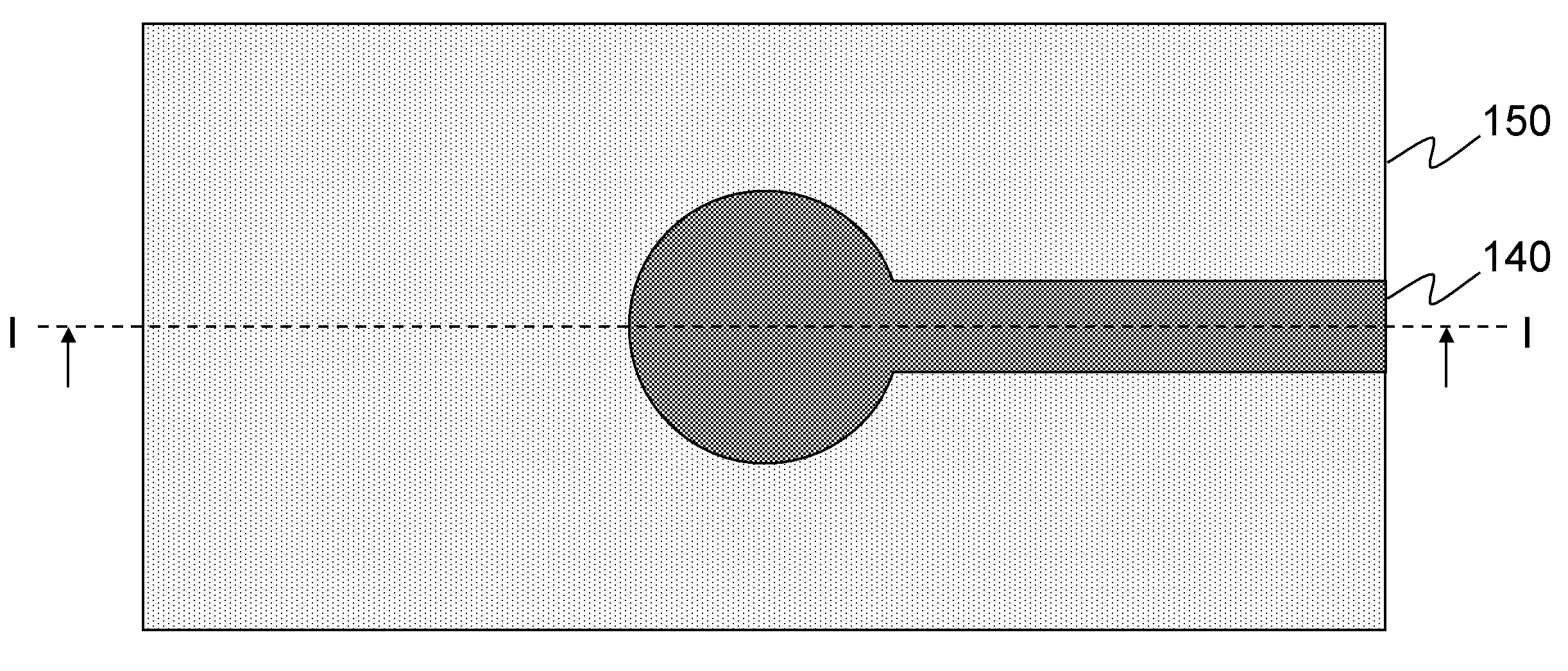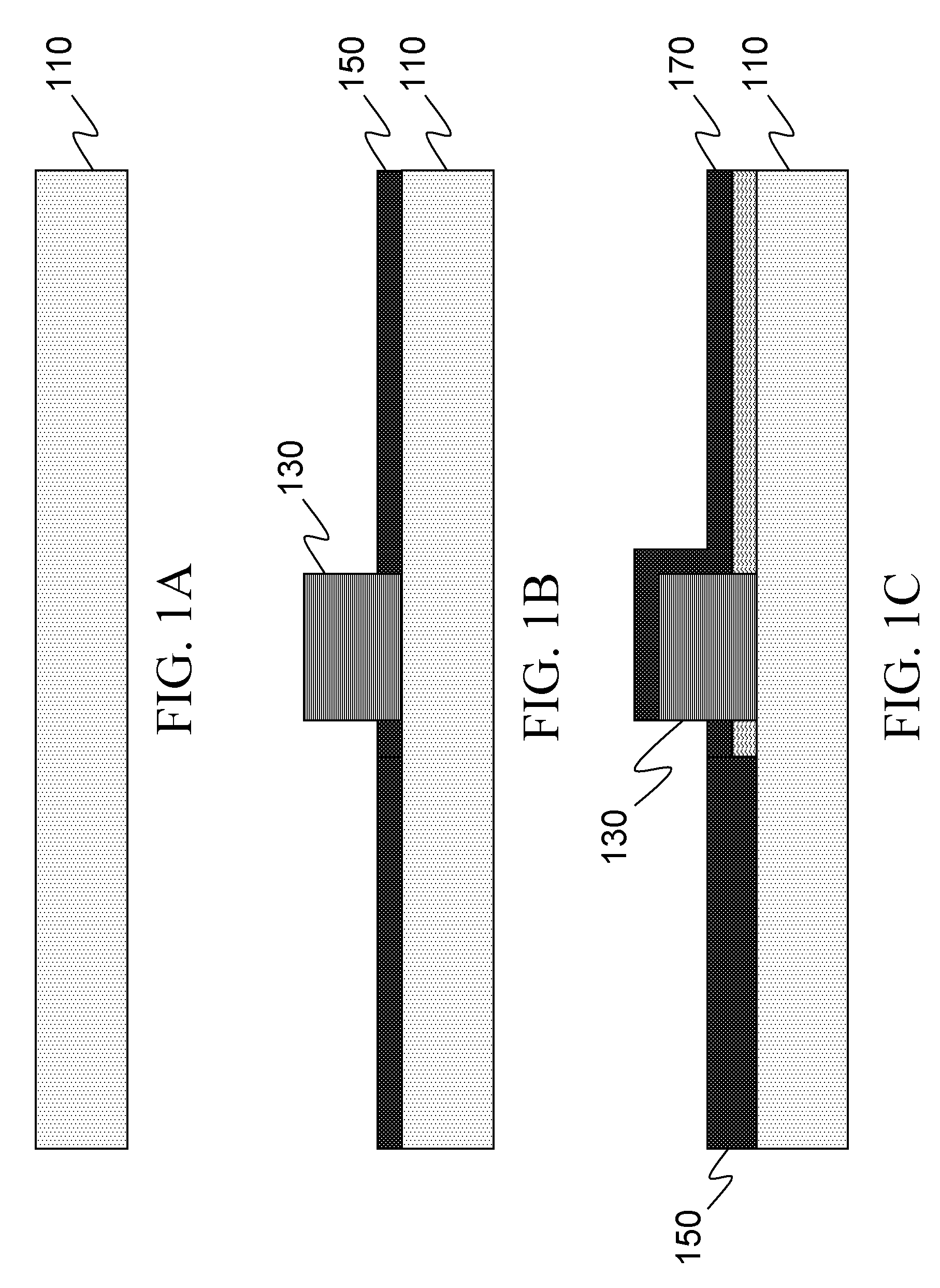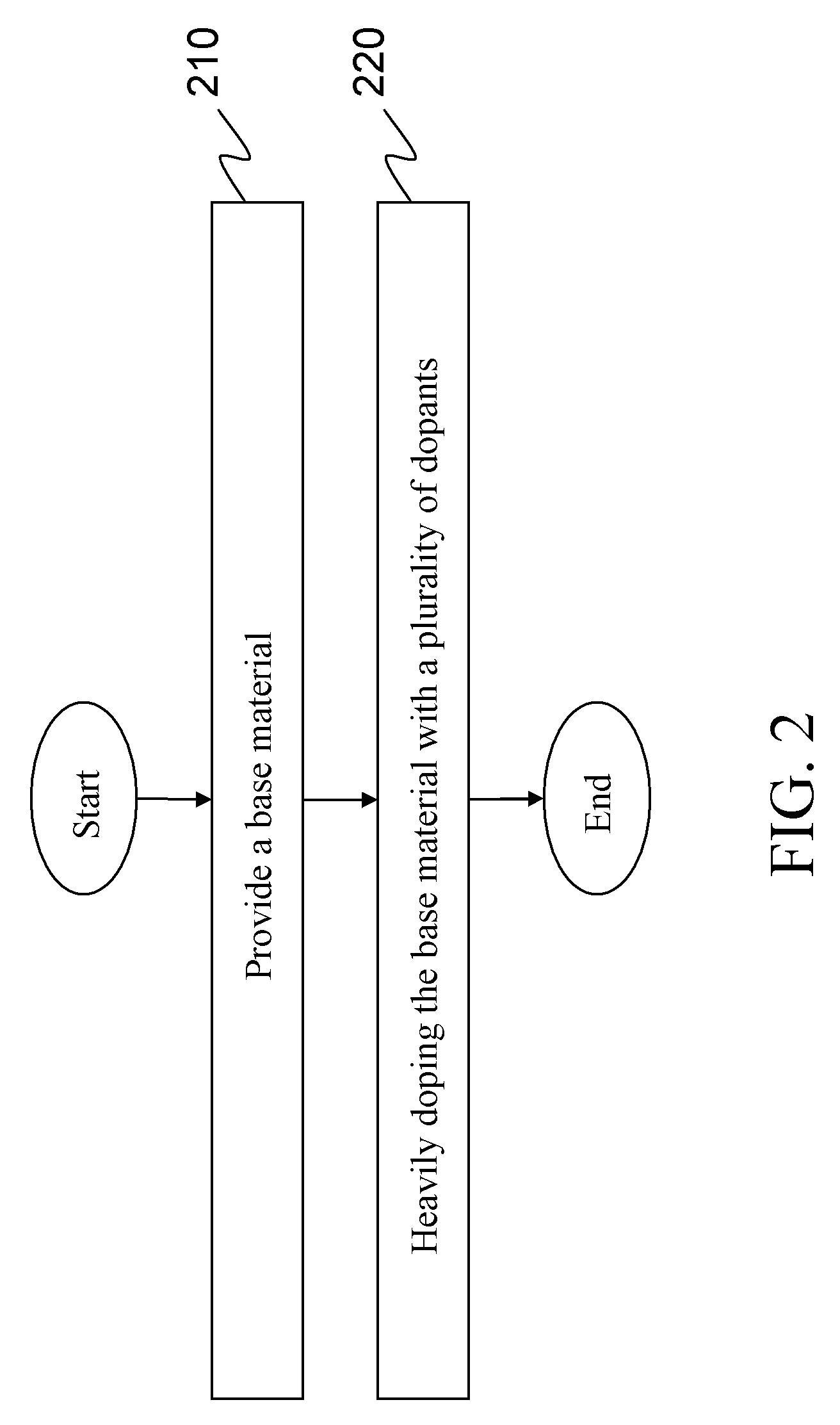Active solid heatsink device and fabricating method thereof
- Summary
- Abstract
- Description
- Claims
- Application Information
AI Technical Summary
Benefits of technology
Problems solved by technology
Method used
Image
Examples
Embodiment Construction
[0042]FIGS. 1A to 1C show a method of fabricating an active solid heatsink device according to an embodiment of the present invention.
[0043]A heavy doped first substrate 110 is provided, a shown in FIG. 1A. The heavy doped first substrate 110 can be obtained through the following steps. Referring to FIG. 2, first, the base material for fabricating the first substrate 110 is provided (step 210). Then, the base material is heavily doped with a plurality of dopants (step 220), so as to obtain the first substrate 110 as shown in FIG. 1A. For example, the first substrate 110 can be, but not limited to, heavy doped P or N silicon substrate.
[0044]A semiconductor film block (e.g. a super lattice barrier 130 for convenience of illustration) and a metal layer 150 are formed on the same surface of the first substrate 110, as shown in FIGS. 1B and 3. The super lattice barrier 130 and the metal layer 150 are spaced apart. In addition to a column as shown in the figure, the super lattice barrier ...
PUM
 Login to view more
Login to view more Abstract
Description
Claims
Application Information
 Login to view more
Login to view more - R&D Engineer
- R&D Manager
- IP Professional
- Industry Leading Data Capabilities
- Powerful AI technology
- Patent DNA Extraction
Browse by: Latest US Patents, China's latest patents, Technical Efficacy Thesaurus, Application Domain, Technology Topic.
© 2024 PatSnap. All rights reserved.Legal|Privacy policy|Modern Slavery Act Transparency Statement|Sitemap



